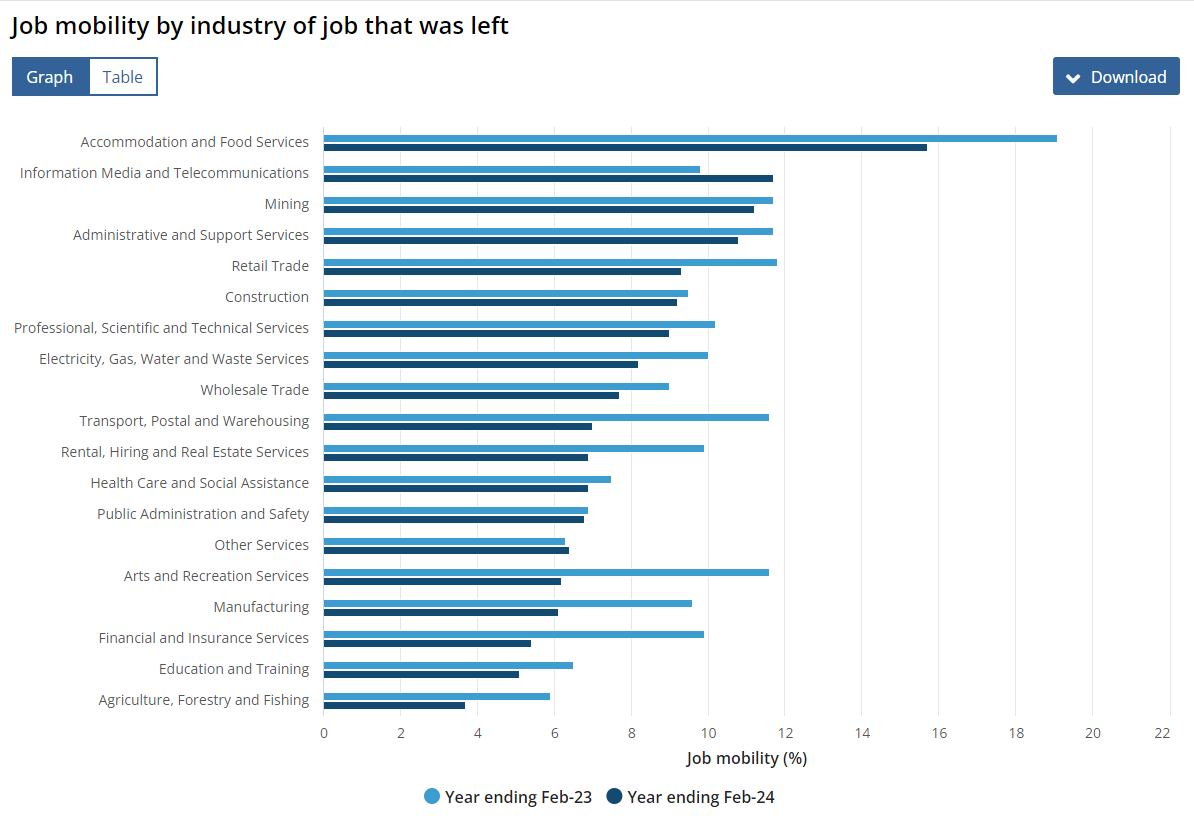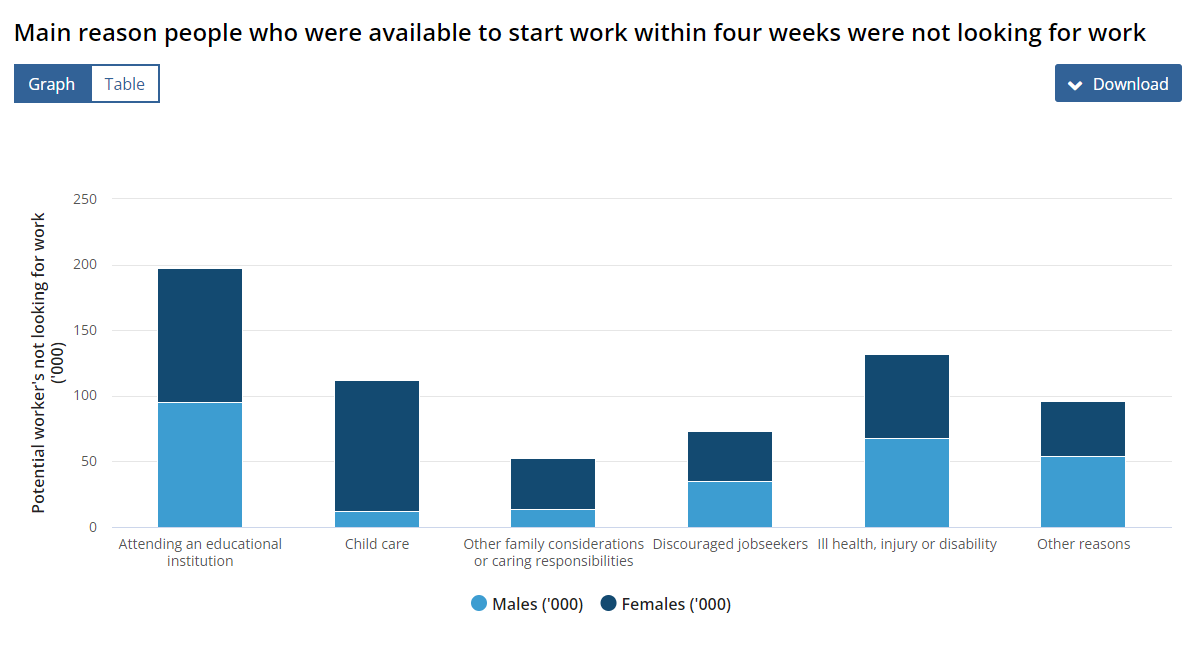

Australia’s job mobility rate has decreased for the first time in three years, returning to pre-pandemic levels, according to new data from ABS.
“In the 12 months to February 2024, around 8% of employed people, or 1.1 million people, changed their employer or business,” said Bjorn Jarvis (pictured above), ABS head of labour statistics. “This was down 1.5 percentage points from 9.6% in February 2023.”
Job mobility rates fell for both men and women, with a more significant decline for men.
Women’s job mobility was slightly higher at 8.2% compared to 7.9% for men. Younger workers remain more mobile, with 12.6% of 15 to 24-year-olds changing jobs. However, this is lower than the 15.9% seen in 2022.
Job mobility rates declined across all industries except for information media and telecommunications (+1.8 percentage points) and other services (+0.1 percentage points).
The largest drops were in arts and recreation services (-5.4 percentage points) and transport, postal, and warehousing (-4.5 percentage points).
“Sales workers still had the highest mobility rate, with 9.7% changing jobs,” Jarvis said.

In February 2024, there were 1.9 million potential workers, up from 1.8 million in February 2023. Of these, 555,000 were unemployed, and 1.3 million were not in the labour force but wanted to work.
“Of the people who wanted to work, just over 1 million people were available to start work straight away,” Jarvis said.
Around 82% of unemployed people reported difficulties finding work, similar to February 2023. The main issues were too many applicants (12.7%), insufficient work experience (10.8%), and ill health or disability (10.7%).
“More people reported difficulties related to labour market conditions in February 2024, compared with February 2023, when the labour market was particularly tight,” Jarvis said.
Get the hottest and freshest mortgage news delivered right into your inbox. Subscribe now to our FREE daily newsletter.
